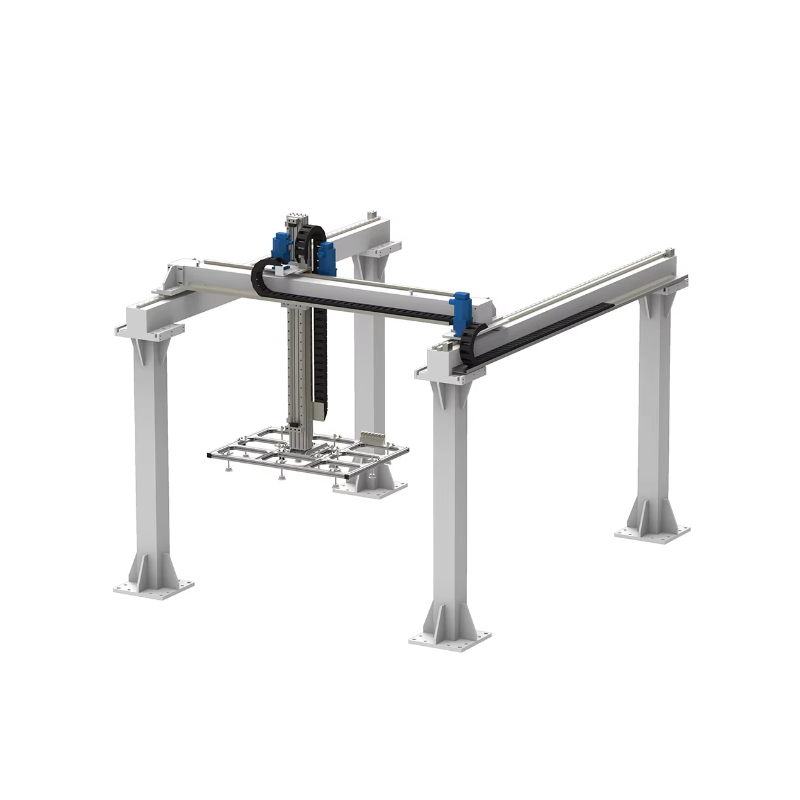As consumers’ requirements for food safety and hygiene standards increase, food processing companies are accelerating the introduction of automated equipment to improve production efficiency and product quality. Recently, a well-known food processing company successfully deployed a truss manipulator, realizing full automation of the packaging process, and becoming a model of the industry’s intelligent transformation.
In the company’s production line, truss manipulators are used to complete the following tasks:
Product sorting and arrangement: quickly sort and arrange foods of different shapes and specifications (such as bagged snacks, boxed beverages, etc.).
Packaging and palletizing: pack packaged food in a specified mode and stack them neatly on pallets for subsequent transportation and warehousing.
Labeling and coding: automatically complete labeling or coding operations during the packaging process to ensure the accuracy and traceability of product information.
Technical advantages
High efficiency: The truss manipulator runs fast and can work continuously for 24 hours, significantly improving packaging efficiency.
High precision: through servo drive and machine vision technology, the manipulator can accurately position to ensure the accuracy of packaging and palletizing.
Hygiene and safety: Fully automated operation reduces manual contact, reduces the risk of food contamination, and meets strict hygiene standards.
Flexibility: Truss manipulators can quickly adjust procedures according to the packaging requirements of different products, adapting to multi-variety, small-batch production models.
Cost savings: Automated equipment reduces labor costs and reduces waste caused by human operational errors.
Industry impact
Promote the intelligent transformation of the industry: The successful application of truss manipulators provides a replicable automation solution for the food industry, and promotes the entire industry to develop in the direction of intelligence and digitalization.
Improve food safety standards: The popularization of automated equipment reduces manual intervention and further ensures the hygiene and safety of food.
Enhance corporate competitiveness: Through automation upgrades, companies can respond to market demand more quickly, improve product delivery capabilities, and enhance market competitiveness.
